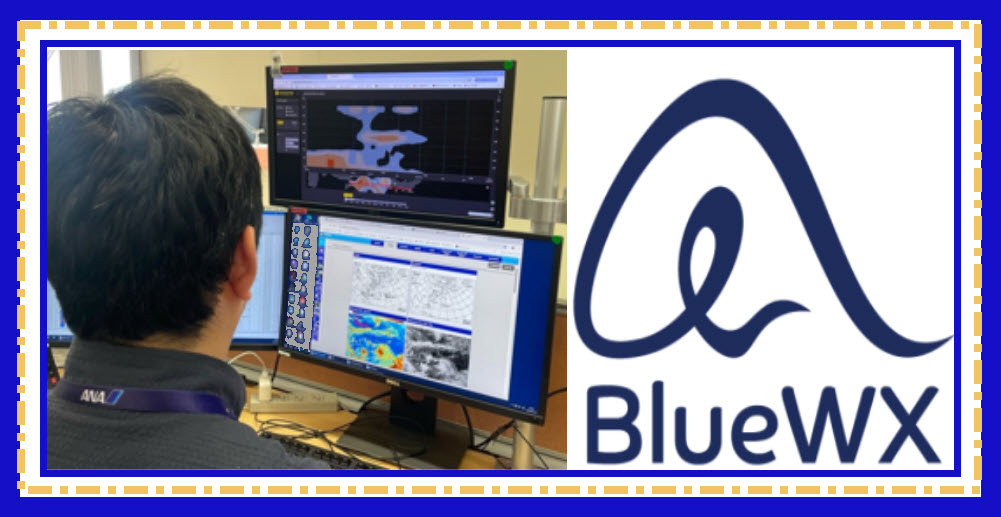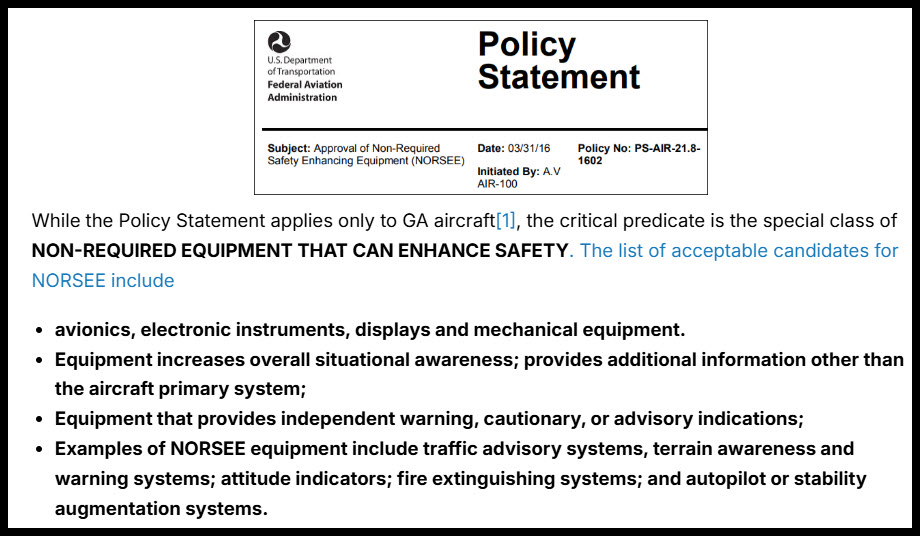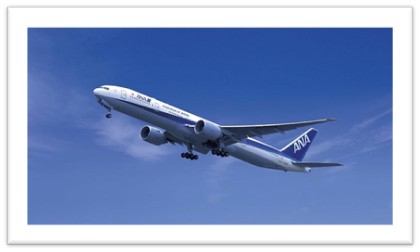Brilliant AI-based turbulence avoidance system- AVOID FAA approval DELAY???

A significant technological advance has been implemented by ANA; AI software loaded with WX data has been extensively tested and shown that it has an 86% RATE OF DETECTING TURBULENCE, The NTSB data shows the following turbulence incidents and accidents:
- Accounted for more than one-third of all Part 121 accidents from 2009 to 2018.
- Most of these incidents resulted in serious injuries (e.g., to flight attendants or passengers), but rarely caused aircraft damage.
- Turbulence is the MOST COMMON TYPE OF ACCIDENT INVOLVING COMMERCIAL AIR CARRIERS.
Here is the Board’s analysis of how this meteorological phenomenon impacts flight:
“Turbulence arises from eddies in the atmosphere and is typically categorized by its source, such as convection, nonconvective wind shears in clear air, mountain waves, surface features, and aircraft wake vortices. Like many accidents in aviation, turbulence-related accidents can often be influenced by multiple human, aircraft, environmental, and organizational factors. Over the past decade, the NTSB has determined the probable cause for numerous turbulence-related accidents and has ISSUED SAFETY RECOMMENDATIONS for improving weather forecasting, dissemination of weather reports, and air traffic management practices to reduce the likelihood of aircraft encounters with turbulence
BlueWX Company Limited, ANA Airways and Keio University jointly worked to develop a system that would meet the Board’s recommendation. They created an AI-based turbulence prediction service represents a major leap forward in aviation safety and comfort. This is a summary of how it works
- Deep Learning Model: The system uses advanced deep learning techniques trained on over a decade of turbulence data. This allows it to recognize complex atmospheric patterns that precede turbulence events.
- Real-Time Prediction: It integrates with airline weather data infrastructure to provide REAL-TIME TURBULENCE forecasts during flight planning and operations.
- High Accuracy: The model boasts an impressive 86% prediction accuracy, validated through operational trials with 2,500 ANA pilots.
- Continuous Improvement: Since its trial launch in 2021, the system has undergone regular updates to refine its performance and expand its global coverage.
- Pilot Feedback: ANA pilots reported that the AI system outperforms traditional methods in real-world conditions, offering more reliable forecasts aligned with flight reports.
- Operational Integration: The system is now fully embedded in ANA’s weather infrastructure, enhancing flight safety, reducing delays, and improving passenger comfort.
Here is an AI generated of what the BlueWX screen might look like.
WX screen enlarged to show the level of detail that might be shown.
This safety enhancement is a MUST HAVE for all US carriers, especially when turbulence-related injuries are rising. FAA data shows a 55% increase over the past decade, with clear-air turbulence (CAT) accounting for 65% of all injuries.
Earning a Supplemental Type Certificate for an addition to a Part 121 aircraft is ordinarily a lengthy process. There is an FAA policy statement that may expedite its approval—
The FAA’s NORSEE program—short for Non-Required Safety Enhancing Equipment—is a policy initiative designed to make it easier for general aviation and rotorcraft operators to install safety-enhancing equipment that isn’t mandated by regulation but can significantly improve flight safety. The instrument here is listed among those eligible for application of NORSEE
-
- Traffic advisory systems
- Terrain awareness and warning systems (TAWS)
- Attitude indicators
- WEATHER ADVISORY SYSTEMS
- Fire or smoke detectors
- Crashworthiness improvements
- Gear configuration or supplemental fuel indicators
NORSEE equipment is approved under a simplified process outlined in FAA Policy Statement PS-AIR-21.8-1602. This applies to aircraft under 14 CFR Parts 23, 27, and 29 (excluding transport category aircraft under Part 25).
- Minor Change Requirement: The equipment must represent a minor change to the aircraft’s type design, and its failure must not result in a reduction in safety.
- Design Flexibility: Manufacturers can use various industry standards as long as the equipment meets FAA minimum design requirements.
Clearly NORSEE is not directly applicable, but with AN EXPERT, a case could be made to the FAA certification staff to utilize its principles particularly given the current statements;
- S. Transportation Secretary Sean P. Duffy has made expediting FAA safety upgrades a CENTRAL PRIORITY in 2025, driven by a series of high-profile aviation incidents and longstanding infrastructure concerns. His approach combines aggressive modernization, workforce expansion, and regulatory reform
- Senate Testimony by Acting Administrator Rocheleau (March 27, 2025)
“Aviation safety is the FAA’s number one priority. While flying remains the safest mode of transportation, aviation safety is not static. There is always room for improvement.”
- Rocheleau emphasized:
- The need to identify trends using data analytics and machine learning
- FAA Administrator Bryan Bedford has made expediting FAA certification for safety enhancements a central theme of his leadership, emphasizing the need to overcome bureaucratic inertia and modernize regulatory processes to match the pace of technological innovation.
- Breaking Risk-Averse Culture “We must dismantle the culture of risk aversion that slows down innovation and safety improvements.”
— Bedford, as cited in VisaVerge’s aviation analysis - Bedford believes the FAA’s traditional caution has led to delays in certifying new safety technologies, such as:
- Enhanced cockpit alerting systems
- AI-assisted maintenance diagnostics
- Satellite-based navigation upgrades
- Streamlining Certification Pipelines
- Parallel testing and certification for proven technologies
- Public-private partnerships to validate safety tools faster
- Digital certification platforms to reduce paperwork and manual review cycles
- Breaking Risk-Averse Culture “We must dismantle the culture of risk aversion that slows down innovation and safety improvements.”
Such strong policy declarations SHOULD IMPACT the FAA field staff, but helping the certification professionals to positively apply those directions requires skills gained from years of experience in TC/PC/STC/PMA TSOA/CRAD projects; for such help CONTACT.
ANA Launches AI Turbulence Prediction Technology
All Nippon Airways Artificial intelligence AI Travel Technology
(ANA NIPPON AIRWAYS CO., LTD)
All Nippon Airways (ANA) has become the first airline in the world to implement an AI-based turbulence prediction service developed by BlueWX Company Limited. The collaboration marks a significant step forward in enhancing flight safety, passenger comfort and operational reliability through advanced weather prediction technology, a crucial advancement as turbulence concerns intensify.
ANA’s adoption of the system follows SEVERAL YEARS OF EXTENSIVE TESTING AND VALIDATION. The TURBULENCE PREDICTION MODEL, developed using deep learning techniques and a decade of turbulence data, has an 86 percent accuracy rate. Operational trials involving 2,500 ANA pilots confirmed its reliability, leading to its formal integration into ANA’s weather data infrastructure
“As turbulence exacerbates due partly to ongoing global warming and becomes a major safety concern for the air transport industry, we are honored to start providing our leading-edge, AI-powered turbulence prediction for ANA flight operations,” said Kaz Watanabe, CEO of BlueWX[1]. “ANA’s decision to use our service highlights the accuracy and reliability of our service, and we look forward to contributing to the crew and passengers of ANA and other airlines in the world in terms of flight safety and comfort.”
The turbulence prediction system has been in development since 2019 as part of a joint initiative between ANA and Keio University. Trial use began in 2021, with continuous updates improving the model’s accuracy and performance. ANA pilots expressed strong support for its continued use, citing accuracy against flight reports and greater effectiveness in real-world operations compared to traditional methods.
The advancement comes at a critical time, as turbulence remains one of the most pressing challenges in aviation. According to the National Transportation Safety Board (NTSB), turbulence accounts for 30 TO 50 PERCENT of aviation incidents. Beyond safety concerns, turbulence also leads to economic losses, including damage to cargo and equipment, as well as flight delays and cancellations from unscheduled inspections that ensure safety during subsequent operations.
BlueWX, founded in July 2023 through an industry-academia collaboration between ANA and Keio University, specializes in AI-driven weather forecasting solutions. The company plans to expand distribution of its turbulence prediction service to other airlines and distribution partners worldwide, aiming to improve flight safety and operational efficiency across the aviation industry.
As the turbulence forecast model continues to improve in accuracy and expand its global coverage, BlueWX remains focused on research and development of next-generation safety technologies. The company is currently developing wind speed and direction forecast models to help optimize flight routes and support the aviation industry’s efforts to achieve carbon neutrality by 2050.
For more information, visit www.ana.co.jp.
[1] B.Eng from University of Tokyo, M.Eng from Massachusetts Institute of Technology, MBA from Kellogg School of Management, and MPA from Harvard Kenney School
Joined BlueWX in 2025 as CEO. In prior, Kaz was Managing Director and Partner at Boston Consulting Group and led its Transformation Practice for Japan. Management experience includes Deputy CEO of a leading Japanese watch maker and COO/CFO of an airline company in Asia. In February 2025, Kaz was appointed President and CEO.







